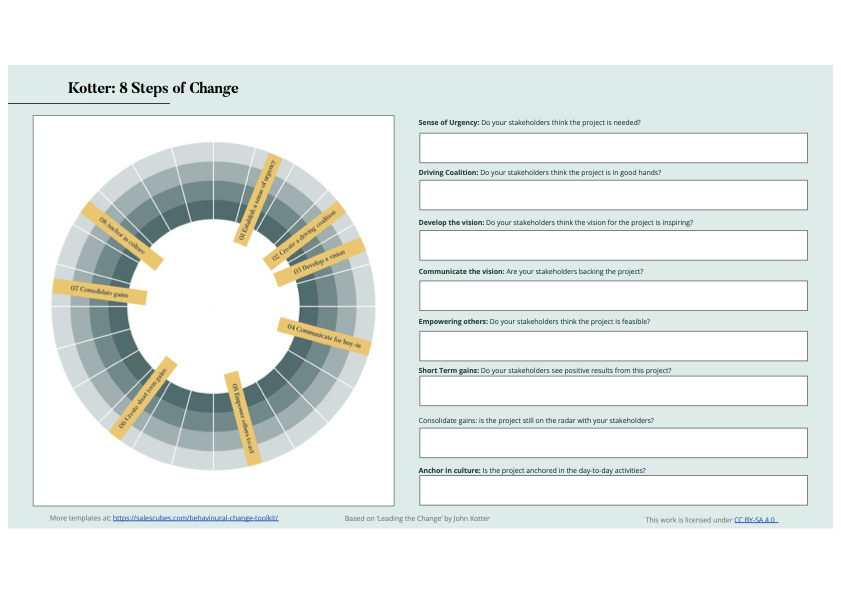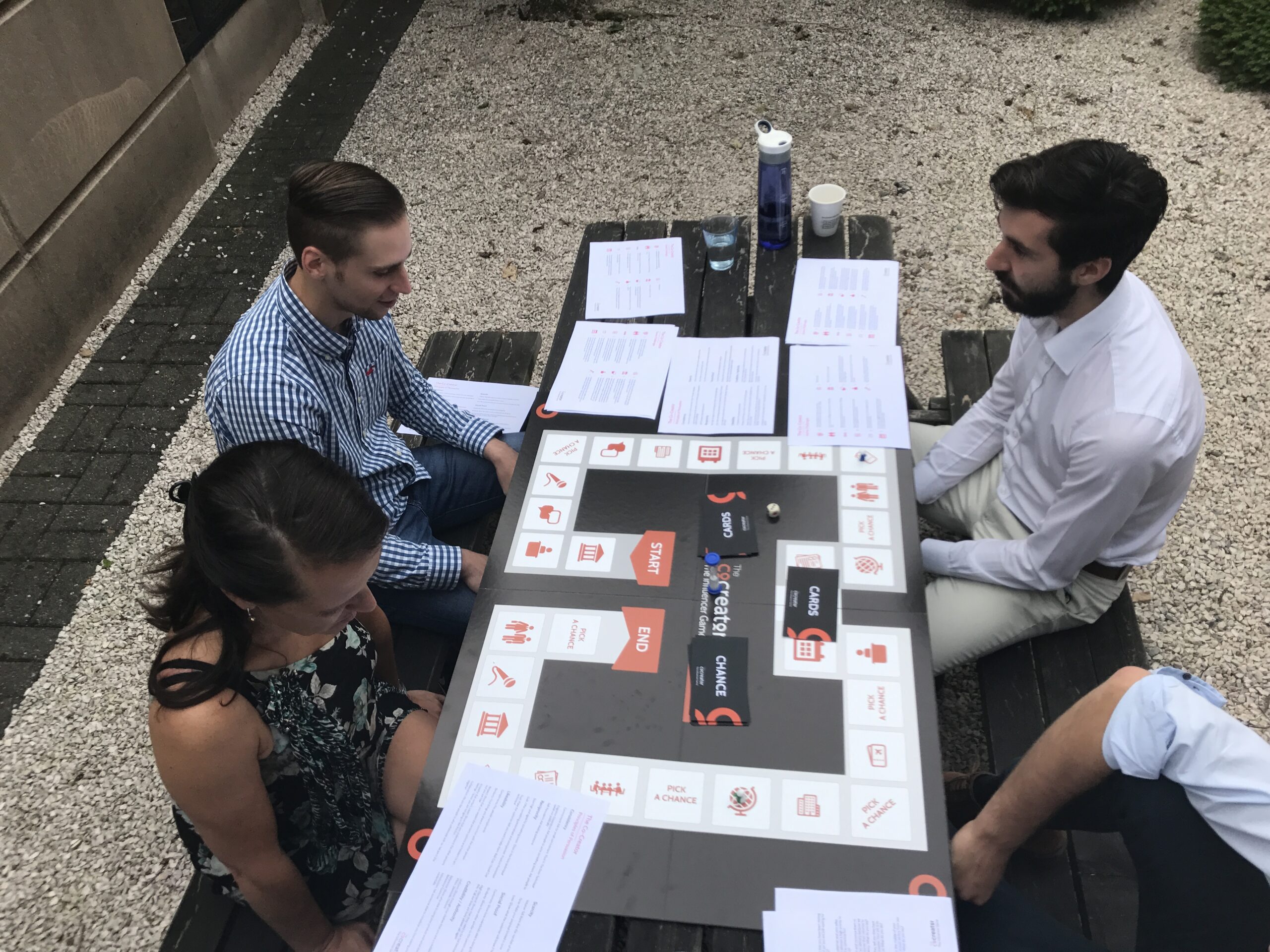What is it?
Kotter’s 8-Step Process is a method for leading and managing change. It outlines a series of steps that organizations and individuals can follow to successfully implement change and ensure that it sticks. This process emphasizes the importance of a systematic approach, starting from establishing a sense of urgency to creating and anchoring new approaches in the culture
How useful is it?
Kotter’s 8-Step Process is used for:
-
- Implementing Organisational Change: From small adjustments to major transformations.
-
- Ensuring Change is Sustainable: Making sure that changes are accepted and maintained long-term.
-
- Engaging and Motivating Stakeholders: Involving employees, management, and other stakeholders in the change process.
-
- Overcoming Resistance to Change: Addressing and mitigating the challenges and pushback that often accompany change initiatives.
Application
This process can be applied in various scenarios, such as:
-
- During Organisational Restructuring: When a company undergoes significant changes in its structure or strategy.
-
- In Response to Market Changes: Adapting to new market conditions, technologies, or customer needs.
-
- For Cultural Change within an Organization: When shifting the organizational culture or internal processes.
Process
Step 1: Create Urgency
Start by building a sense of urgency around the need for change. This helps to spark the initial motivation to get things moving. Creating a sense of urgency is essential to overcome complacency and create a motivation to change. This step involves identifying the problem or opportunity that needs to be addressed and communicating it effectively to the relevant stakeholders.
During the assessment ask yourself the following question: Do the stakeholders think the project is needed?
Step 2: Form a Powerful Coalition
Convince people that change is necessary. This often requires strong leadership and visible support from key people within your organisation. This step involves identifying and gathering a team of individuals who can drive the change initiative forward, and who have the necessary skills, authority, and credibility to do so.
During the assessment ask yourself the following question: Do the stakeholders think the project is in good hands?
Step 3: Create a Vision for Change
When you first start thinking about change, there will be many great ideas and solutions floating around. Link these concepts to an overall vision that people can grasp easily and remember. 1.A clear and compelling vision for the desired outcome of the change initiative must be developed. This vision should be communicated effectively to all stakeholders and should inspire them to work towards achieving it.
During the assessment ask yourself the following question: Do the stakeholders think the vision for the project is inspiring?
Step 4: Communicate the Vision
Make sure as many people as possible understand and accept the vision and the strategy. Communication is critical to ensure that everyone understands the vision and their role in achieving it. Communication should be ongoing and delivered in a variety of formats to reach all stakeholders.
During the assessment ask yourself the following question: Are the stakeholders backing the project?
Step 5: Empower to Act
As you implement your change, you will find that processes, systems, or structures are in the way. Identify and remove these barriers to change. This step involves removing obstacles that prevent people from taking action and providing them with the resources and support they need to make the change happen.
During the assessment ask yourself the following question: Do your stakeholders think the project is feasible?
Step 6: Create Short-term Wins
Nothing motivates more than success. Give your company a taste of victory early in the change process. Celebrating small victories along the way can help to maintain momentum and keep people engaged in the change initiative. These short-term wins should be aligned with the overall vision for change.
During the assessment ask yourself the following question: Do your stakeholders see positive results from this project?
Step 7: Build on the Change
Kotter argues that many change projects fail because victory is declared too early. Real change runs deep and takes time. This step involves using the momentum gained from the short-term wins to build on the changes made and create even more positive outcomes.
During the assessment ask yourself the following question: Is the project still on the radar with the stakeholders?
Step 8: Anchor in Culture
Finally, to make any change stick, it should become part of the core of your organisation. The final step involves making the changes a permanent part of the organisation’s culture and ensuring that the new approaches are sustainable and continue to evolve over time. This may involve changes to policies, systems, and structures to support the new way of doing things.
During the assessment ask yourself the following question: Is the project anchored in the day-to-day activities?
Sources
- Kotter J., 2012, Leading the Change, Harvard Business Review Press
- Kotter J., 1995, Leading Change: Why Transformation Efforts Fail, Harvard Business Review
- Kotter J., 2012, Accelerate!, Harvard Business Review
Tool



